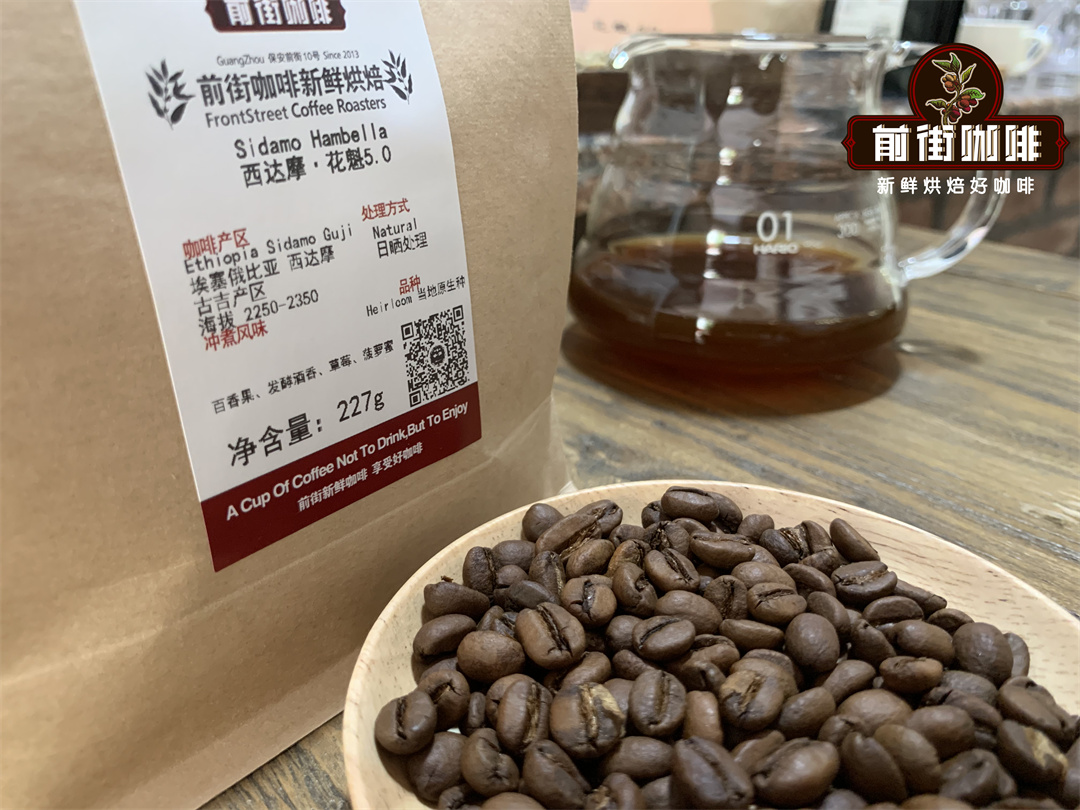The types of coffee beans include why the coffee beans in the coffee industry are diversified.
When we buy a bag of coffee from the supermarket, we will notice that there is more than one kind of coffee beans. But how many kinds of coffee beans are there? If you care about what kind of coffee you drink, you may have a headache about all the mixed information about the type of coffee. The label on the coffee bag doesn't help either. So let the front street coffee help solve the problem.
Arabica coffee is the most common and popular. Arabica coffee (also known as Typica) is the most common ingredient in coffee. This is coffee that originated in Ethiopia. Some people may argue that it was first found in Yemen. In fact, it was discovered and domesticated in Ethiopia and brought to Yemen shortly afterwards, where it became popular in the port city of Mocha.
Arabica coffee is a less caffeinated version because it contains only 1.5% caffeine. It happens to be a sweeter and fatter bean than Robusta. This has led to the tastier, milder coffee that many people like. Overall, Arabica coffee and its subspecies account for about 60% of global coffee production. Arabica coffee beans are vulnerable to diseases and insect pests, which is a pain point in the history of the coffee industry.
The growth necessities of Arabica coffee are very special because it requires an average of about 21 C a year to thrive, humidity, sun and shadow, and high altitude. Not many countries can provide this kind of landscape and climate.
Robusta is a harder, more resistant coffee bean.
Robusta coffee beans also originally came from Ethiopia, but it was not until about 100 years after the birth of Arabica coffee that it was considered an independent coffee bean. Its name mainly comes from the fact that it is so resistant to diseases and insect pests that it can eventually produce larger crops every year than Arabica coffee beans.
But the disadvantage is that Robusta tastes much worse, which is inappropriate for many people. It is often said to be similar to charred tires and dirt, but some of them are also affected by the way they are baked. Considering that Robusta contains less than half the sugar and fat of Arabica coffee, but twice as much caffeine (2.7%), you begin to understand why it is not a favorite of the general population.
When it comes to espresso, Robusta seems to be the coffee bean of choice. This is because its chemical composition helps it produce a lot of coffee oil, and espresso is used to make it.
Seeing that Robusta's taste is so strong, it is also more recommended for lattes to make iced lattes because the coffee gives off its flavor, and the coffee brewed is stronger by default than Arabica coffee.
Coffee mixed with Arabica coffee and Robusta coffee. This is done to balance taste and caffeine content because Arabica caffeine has a lower caffeine content.

Some coffee subspecies are grown for commercial use
Arabica coffee beans and robusta coffee beans have many subspecies. And they are rarely called subspecies, partly because they have their own names, and partly because people don't actually know it.
For example, you can find a 100% Arabica bag next to Arabica and Blue Mountain Coffee and correctly assume that Blue Mountain Coffee is a different type of coffee from Arabica Coffee.
Liberia
When coffee rust killed a large number of Arabica coffee crops, it was brought to the Philippines. This kind of coffee has a more woody taste and is a bit smoky. It also has the scent of flowers, but this kind of coffee is quite difficult.
Blue Mountain
Blue Mountain Coffee, which only grows in Jamaica, is not very bitter and has a sweeter side. It is a variant of ordinary Arabica coffee.
Bourbon
A subspecies of Arabica coffee grown chiefly on the island of Reunion in the Indian Ocean. It mutated and developed its own flavor and was introduced to East Africa after a period of time (1897). There it is called a French missionary because it was introduced to the region by French missionaries. In Rwanda, bourbon is called Mayagurez.
Katim.
This subspecies is a cross between Caturra and Timor, both of which are bourbon subspecies. This is a common thing in the coffee bean pedigree, and many strains are only slightly different from the original coffee beans, but with different names.
Why the coffee beans in the coffee industry are diversified
What would collect such a large variety of coffee beans, and if it wasn't so good coffee in the first place, then how did Robusta rise? Well, first of all, Arabica coffee is a very sensitive plant. I am mainly talking about diseases and insect pests, but I also talk about sunlight and direct sunlight and shade, as well as general living conditions.
This is a rather laborious plant that blossoms only a few years after it is first planted (3-5 years). When it blossoms and then produces coffee cherries, its number is not large.
Arabica coffee produces much less than robusta coffee, which means a lot of plants are needed.
Thus, on a decisive day in 1867, coffee rust was well known in Sri Lanka and was then known as Ceylon (hence Ceylon btw). The fungus originally came from Ethiopia, but how it spread all the way to Sri Lanka is unknown.
The point is that large coffee farms have become useless because Arabica coffee is susceptible to infection and to this day there is no known cure.
As a result, Robusta was planted where Arabica was infected, hoping to get rid of the fungus. It worked, and now Robusta crops in most of Asia are due to the event.
This is not the only reason why Robusta grew there (and not just there), but it is an important factor.
Liberica is also asked to help in some places where fungi spread, and it can resist it and grow successfully.
Since then, the coffee industry has begun to grow more and more coffee subspecies, hybrids meaning delicious and disease-resistant, some cultivated with a certain aroma, and so on.
The origin of these coffee beans
Coffee beans have specific needs that must be met. They need a considerable amount of rainfall, so there is fresh water around them, and the air should not be very dry (although there is a subspecies growing in the African desert) and must be at least 1200 meters (0.74 miles or more) above sea level.
The soil must be fertile, and as nutrients must be rich, because coffee is a very hungry plant, so to speak. It eats the nutrients in the soil quite quickly, so it needs some type of soil.
Important Notice :
前街咖啡 FrontStreet Coffee has moved to new addredd:
FrontStreet Coffee Address: 315,Donghua East Road,GuangZhou
Tel:020 38364473
- Prev

Is Langshan really the best coffee in the world?
Professional coffee knowledge exchange more coffee bean information Please follow the coffee workshop (Wechat official account cafe_style) except Kopi Luwak (Kopi Luwak) of Indonesia, Blue Mountain of Jamaica may be the most expensive coffee in the world. The Japanese regard the Blue Mountains as a treasure. In Tokyo, it costs about CNY300+ to drink a cup of first-class Blue Mountain Coffee. Why is it so expensive?
- Next

According to the characteristics of Manning coffee beans, which kind of Mantenin coffee beans is the best? Evaluation of the flavor of high quality gold Mantenin.
Manning believes that everyone has heard the origin of its name: [Mantenin originally refers to the name of a tribe in Indonesia, but there is also a story about the name that turned into a coffee bean. At the beginning, the Japanese soldiers returned to Japan after colonization in Indonesia, thinking about the delicious local coffee, so with the help of trading friends, they invited the local
Related
- Guji coffee producing area of Guji, Ethiopia: Humbela, Shakiso, Wulaga
- What is the most expensive variety of Qiloso in BOP multi-variety group?
- How to store the coffee beans bought home?
- Why are Yemeni coffee beans so rare now?
- Ethiopian Sidamo all Red Fruit Sun Sun Santa Vini Coffee beans
- SOE is mostly sour? What does it mean? Is it a single bean? what's the difference between it and Italian blending?
- Is Italian coffee beans suitable for making hand-brewed coffee?
- How to choose coffee beans when making cold coffee? What kind of coffee beans are suitable for making cold coffee?
- Just entered the pit to make coffee, what kind of coffee beans should be chosen?
- Can only Japan buy real Blue Mountain Coffee? What are authentic Jamaican Blue Mountain coffee beans?

